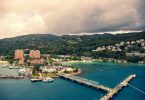The PATA Annual General Meeting on April 24 and 25 is always an important event as it involves leaders from the Asia Pacific travel industry. But it could also turn into an important event for the island of Borneo. For the second time this year, Borneo Island plays host to a major tourism venue. In late January, the Asean Travel Forum took place in Brunei, emphasizing the Sultanate’s ambitions to become a major destination in one of Asia’s last eco-tourism paradises. And now it is the turn of Kuching, Sarawak’s capital city, to play host to the PATA Annual Meeting, welcoming some 160 delegates.
This is an opportunity that PATA is keen to seize to highlight the potential of Borneo Island. “Borneo is a ‘brand’ on its own due to its strong appeal for international travelers. However, it has curiously not succeeded to offer, so far, a tourist experience on the entire Island,” said Greg Duffel, PATA CEO and president.
Borneo faces many challenges in its quest to be better exposed. Information about the destination remains fragmented due to the fact that the Island – the third largest in the world – is shared between three countries: Brunei represents 1 percent of the total Island’s surface, Malaysia 26 percent, and Indonesia (Kalimantan) 73 percent.
Distances are consequent: it would take approximately three hours to fly from Kota Kinabalu (Sabah in Malaysia) or Brunei to reach Banjarmassin, the most southern city of Borneo located in the province of southern Kalimantan. And over the years, Borneo looked increasingly as two islands: northern Borneo on one side, comprising Sabah and Sarawak (Malaysia), as well as Brunei; on the other side, Kalimantan, the Indonesian part of the Island.
If northern Borneo has succeeded to gain fame on the international tourism stage, Kalimantan tourism still remains in its infancy. From the 3.4 million international travelers recorded in 2008 for the whole Borneo, 94.7 percent of them went to northern Borneo. While Sarawak welcomed 2.26 million international visitors that year, Kalimantan recorded officially only 184,000 foreign travelers.
Many reasons explain this unbalanced evolution: infrastructures are still not up to world standards in Kalimantan, with many roads in desperate need of an upgrade. Also there are almost no flights between northern Borneo and Kalimantan. The only air link to date is a three-times weekly frequency between Kuching (Sarawak) and Pontianak (West Kalimantan). To be partially blamed is also Royal Brunei Airlines, the national carrier of Brunei, which has completely failed to turn Bandar Sri Begawan into Borneo’s gateway. For mostly prestige reasons, the airline flies to London or Auckland but still cannot provide a connection to Balikpapan in east Kalimantan, despite the fact of it being the center of oil and gas production, or to Banjarmassin or Pontianak, both cities having a half a million inhabitants.
The PATA Strategic Intelligence Center has conducted a study on Borneo’s potential, collecting data and information. “We see a tremendous potential for the island as one of Asia’s last tourism frontiers, especially as an ecotourism paradise,” added Duffell. Some 50 percent of Borneo’s surface is rainforest. According to the World Wildlife Fund (WWF), the island has at least 222 species of mammals (44 of which are endemic), 420 resident birds (37 endemic), 100 amphibians, 394 fish (19 endemic), 15,000 plants (6,000 endemic) – more than 400 of which have been discovered since 1994. Borneo is also home to over 30 ethnicitiess, making it a true cultural kaleidoscope of people.
Over the last 50 years, the island has experienced a dramatic shrinkage of its natural and wildlife resources due to logging and the conversion of the rainforest into palm oil production sites. According to the WWF, satellite studies show that some 56 percent (more than 29,000 km²) of protected lowland forests in Kalimantan were, for example, cut down between 1985 and 2001 despite existing protection laws, which are unfortunately often violated, usually without any penalties.
The alarming disappearance of Borneo’s natural resources raised awareness by both states, NGOs (nongovernmental organizations), and local communities to set up initiatives to protect what can still be saved today. In Indonesia, for example, the east Kutai regency has worked with local communities in Wehea villages to protect not only the flora and the fauna but also local customs. “We help communities to prepare for future eco-tourism, which will greatly help to nurture rainforests in the east Kutai area. We set up a unique case of self-management as 38,000 hectares of Wehea protected forest are controlled by indigenous Wehea people,” said Christian Djoka, who works for the US NGO, “The Nature Conservancy.”
The most encouraging sign was the signature of an agreement between the three countries sharing Borneo – a very rare event – to create the “Heart of Borneo,” a commitment from the three governments in Borneo to create one conservation vision to ensure the effective management of forest resources and conservation of a network of protected areas, productive forests, and other sustainable land uses. The Heart of Borneo covers more than 22 million hectares of equatorial rainforest across Brunei, Indonesia, and Malaysia. The initiative is supported by the WWF.
The PATA wants now to provide its expertise to BIMP-EAGA (Brunei-Indonesia-Malaysia-Philippines-East Asia Growth Area), with Borneo being a major focus. “We hope that [by] being able to help the region to get more awareness, we will also contribute to nurture one of Asia’s last eco-tourism paradise[s],” hoped Duffell.
(eTN): Borneo should benefit from PATA annual meeting | re-post license | post content






















